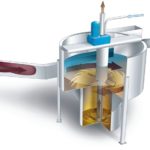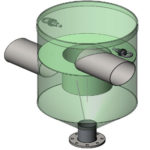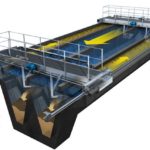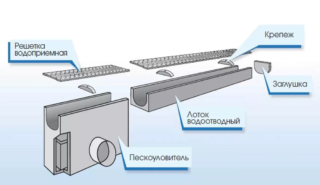Trash boxes are part of the storm sewer. These engineering devices serve to keep sand and fines from entering the network. They are also installed for collecting surface runoff in industrial plants with discharge into the internal sewerage system and car washes.
Structure and principle of operation
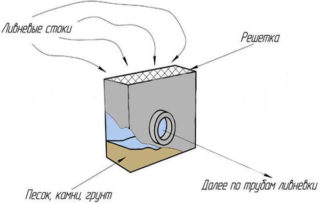
The sand-collecting device is produced in the form of a container with lateral nozzles located above the bottom, and an upper compartment - a water receiver. Between it and the bottom there is a special grid that cuts off mud, sand and silt from the water runoff.
The principle of operation of the device:
- Surface runoff is directed to the water intake trays and flows down due to the created slope into the sand trap.
- The device has a large volume, so the flow rate drops dramatically. This leads to the precipitation of debris and grains of sand.
- Water masses move further along the collector, gaining speed.
Sand traps are also placed in the border area at the same time of several drains moving in different directions.
Sand traps are equipped with special chambers - galvanized steel baskets. Fragments of debris fall into them. Devices with such baskets are easier to clean.
Types of sand traps
Structurally different sand traps are used for different types of sewer networks. They can be single-section or have several compartments, depending on the purpose and the amount of surface water.
The most commonly used options for sand traps:
- Vertical, cylindrical. The solid sediment will settle on its own to the bottom of the large tank, and the purified liquid will begin to flow out through the outlet. They are usually used in industrial facilities.
- Horizontal. Structurally the simplest, but clean thoroughly. Consist of two compartments. In the first, the water flow moves directly or in a circle. In the second, precipitation occurs. Ideal for home use.
- Tangential. The devices are round in shape, water flows in them fall tangentially. Thanks to the centrifugal force, the water flow in the tank begins to rotate, and fragments of debris are knocked out onto its walls and slowly slide down to the bottom of the device.
The latter option is more expensive than the previous ones and, despite its effectiveness, is not often used.
Manufacturing materials
Engineering devices for trapping dirt are made from the following materials:
- concrete;
- polymer concrete;
- plastic;
- stainless steel.
Concrete options are strong and stable, but they weigh a lot, which makes installation difficult. Over time, under the influence of water, they go into small cracks and lose their tightness. Their cost starts from 3000 rubles.
Plastics made of plastic are inexpensive: the price starts from 1000 rubles. Other advantages are low weight, ease of installation, resistance to corrosion, tightness, resistance to temperature changes.
Polymer concrete devices combine the advantages of concrete and plastic structures. They are durable, but they don't weigh much. Such products cost more than the previous ones - from 5,000 rubles.
Stainless steel options are usually installed in factories. Sometimes they are equipped with aerators for more effective cleansing, especially from greasy and viscous suspensions. The minimum price for a stainless steel sand trap for internal sewerage is 15,000 rubles.
Installation features
- Mark the territory for the storm sewer. The site chosen for the sand trap is located near the gutter before entering the main system.
- A pit is dug, the volume of which is slightly larger than the sand tank.
- The bottom of the pit is concreted in order to subsequently avoid skewing the sand trap.
- The sand trap is installed on concrete and fixed with special bolts.
- Connect the structure with the help of pipes with the sewer main and the weir and bury the foundation pit.
The operation of the device is achieved through correct installation. The water inlet hole is located higher than the outgoing one. This difference in height allows the water flow to move through the sand trap, to the bottom of which fragments of debris and grains of sand precipitate. When installing the sand trap, a slope of 10 mm must be provided for each meter of the gutter, otherwise the system will not function.
The sand trap is an important part of the storm drain. If the device is neglected, blockages will often appear in the system, which will significantly reduce its efficiency and operational life.

